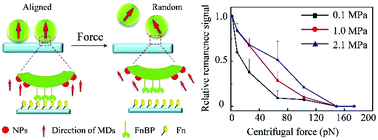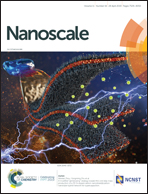Nanoprobe-based force spectroscopy as a versatile platform for probing the mechanical adhesion of bacteria†
Abstract
The first stage of biofilm-associated infections is commonly caused by initial adhesion of bacteria to intravascular tubes, catheters and other medical devices. The overuse of antibiotics to treat these infections has led to the spread of antibiotic resistance, which has made infections difficult to eradicate. It is crucial to develop advanced strategies to inhibit biofilm formation, avoiding the emergence of antibiotic resistance. Previously, it has been reported that substrate stiffness plays an important role in the initial attachment of bacteria. However, the mechanism of how the stiffness modulates the initial adhesion of bacteria remains unclear. Here, we developed magnetic nanoprobe-based force-induced remnant magnetization spectroscopy (FIRMS) as a new platform to measure the adhesion force of bacteria. Through examining the initial adhesion force and the adhesive protein, fibronectin-binding protein (FnBP), of Staphylococcus aureus (S. aureus), we found that the increase of the substrate stiffness promoted the expression of FnBP, thus enhancing the initial adhesion force of bacteria. Following the formation of initial adhesion, the substrates with soft stiffness delayed the biofilm formation, whereas those with moderate stiffness showed preferential promotion of the biofilm formation. We expect this versatile platform to be beneficial to the study of adhesion behaviors of bacteria that sheds light on the design of new medical materials to treat microbial infections.


 Please wait while we load your content...
Please wait while we load your content...